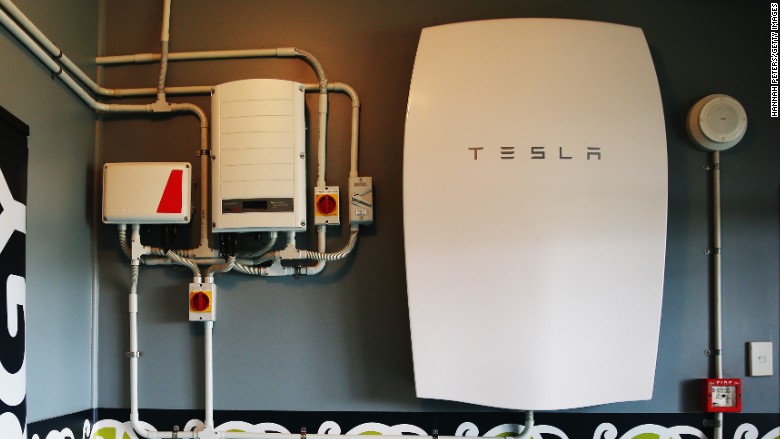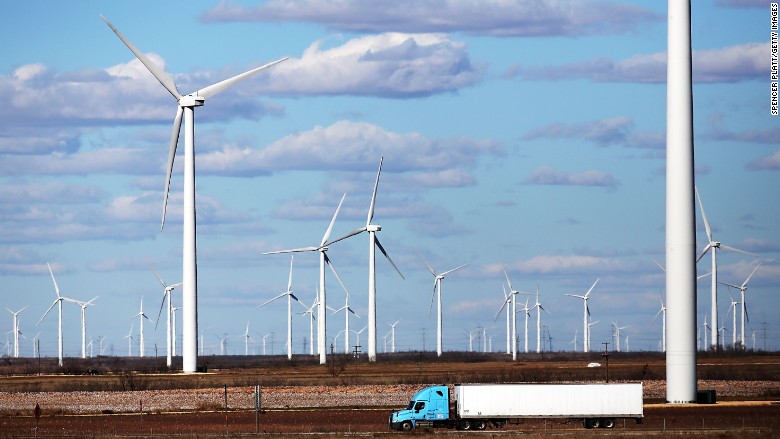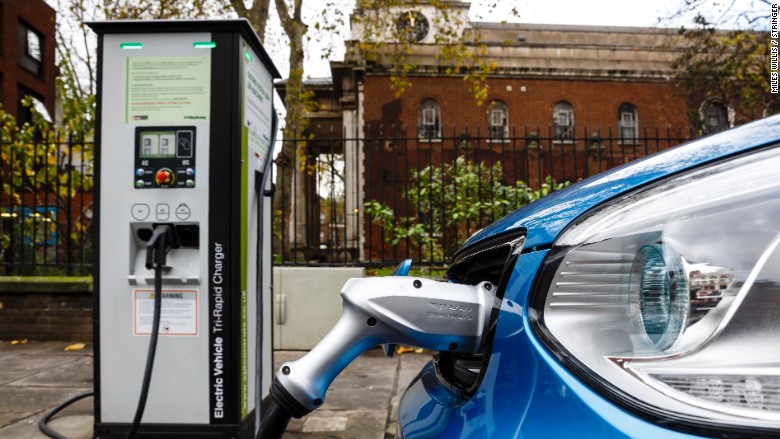
As smartphones become ubiquitous and drones get ready to fill the skies, the need for batteries becomes even more acute.
But battery technology isn't exactly state-of-the-art -- there hasn't been a major breakthrough in more than 25 years. So a number of tech companies and startups are racing to make batteries that are more efficient, cheaper and longer lasting.
Here's a few key things we can look forward to as batteries improve.
Renewables generating all our electricity
There's one big problem with solar and wind power: The sun doesn't always shine, and the wind doesn't always blow.
So the renewable energy sector needs to find an efficient way to store some of that energy so it can be used later -- instead of relying on fossil fuels to fill in the gaps.
About two dozen companies currently offer batteries big enough to store energy to feed the electric grid, and even more have options for homeowners with solar panels.
Tesla (TSLA) is one example. The company recently launched two battery products: The Powerpack, a 7 kWh Powerwall for individual homes, and a massive 100 kWh battery intended for industrial use.

But experts say energy storage technology has a ways to go before it makes financial sense.
Take West Texas, where windy plains are filled with turbines generating electricity so cheap, it's practically free. On a windy day, the turbines are generating more electricity than the grid needs.
But a battery big enough to store that power would cost millions of dollars, and it would only survive about 500 charges. So, for the time being, it's cheaper to rely on fossil fuels when the wind stops.
"It would be a huge asset to have batteries that can instantly discharge [electricity to the grid], but they just don't last a long time. It's still really expensive," said Robbie Searcy, a spokeswoman for the Electric Reliability Council of Texas.

No more 'range anxiety' with electric cars
Fully electric vehicles aren't a huge part of the car market. They can be unnerving for customers concerned that the car's battery will die before the driver finds a charging station.
Tesla's $70,000 Model S can travel the furthest of any electric vehicles before it needs a recharge: 265 miles with an 85 kWh battery, according to the EPA.
Most other current models can only go about 100 miles, which makes long trips unappealing.
So unless electric car companies invest in thousands of charging stations, they'll need better batteries to relieve that "range anxiety."

Everlasting mobile devices
Imagine a world where laptops never run out of juice and cell phones never die.
It's not so farfetched. There are a number of promising new ways to pack more power into small batteries.
Among the noteworthy is a "solid state" Lithium-ion battery from researchers at Samsung and MIT. They say it can survive hundreds of thousands of chargs, store 20% to 30% more power, and isn't as susceptible to overheating. The university says it could be a gamechanger for powering cellphones, laptops and electric cars.
And in March, researchers at South Korea's Pohang Univeristy said they developed a fuel cell battery that can power smartphones, drones, laptops or even electric vehicles.
"With this fuel cell, drones can fly more than one hour, and the team expects to have smartphones that charge only once a week," the university said in a press release.
Related: Are these chargers the solution to terrible smartphone batteries?
But just because researchers are crying breakthrough doesn't mean the next iPhone will be packed with twice the power. What works in a research lab doesn't always translate to a commercial version.
That's happened with several headline-making "breakthroughs" in recent years -- including a battery cell from a startup called Envia, and an electric car battery from now-bankrupt A123 Systems that used MIT-developed technologies. Large-scale production versions of those batteries didn't end up working.
And because switching to a new charging method is expensive and time consuming, most mobile device makers are waiting until these burgeoning technologies are fully vetted -- and cheap enough to mass produce -- before they invest in a switchover.




